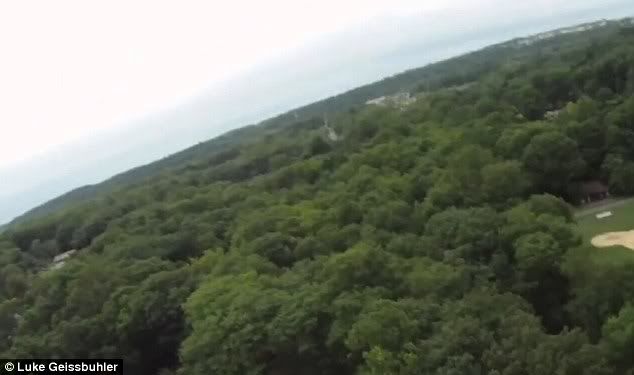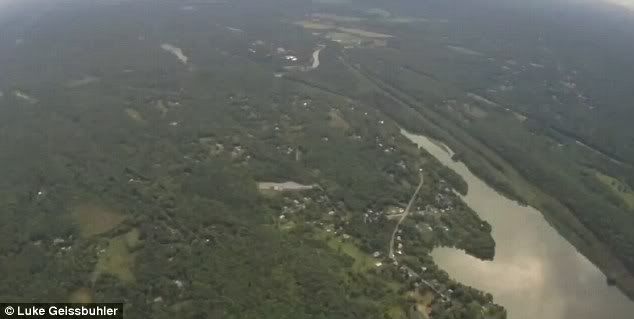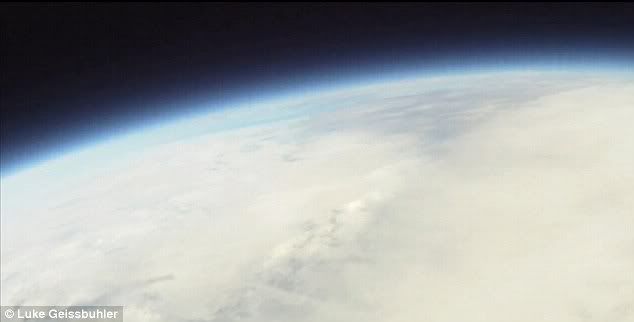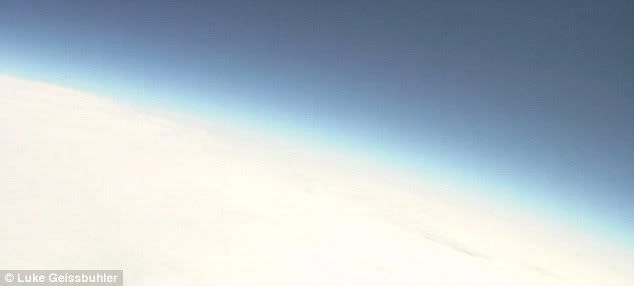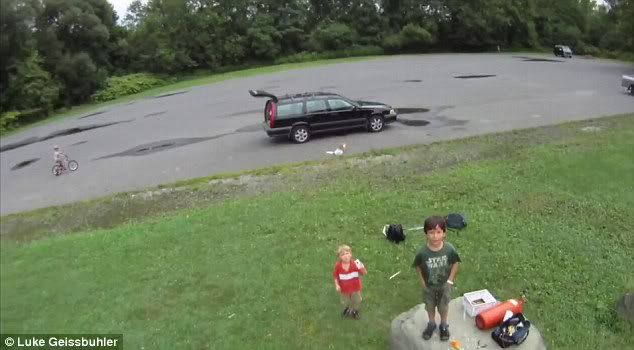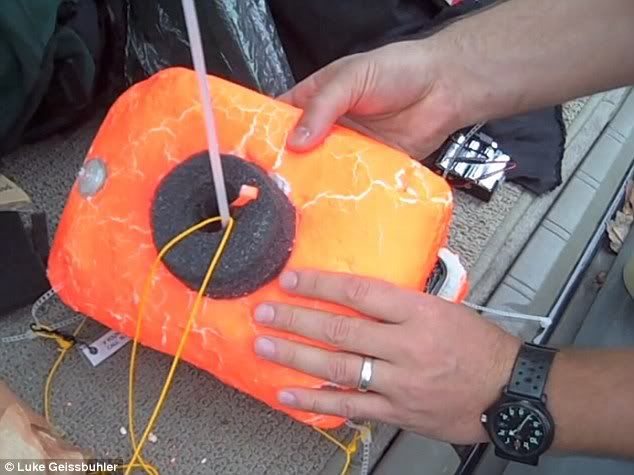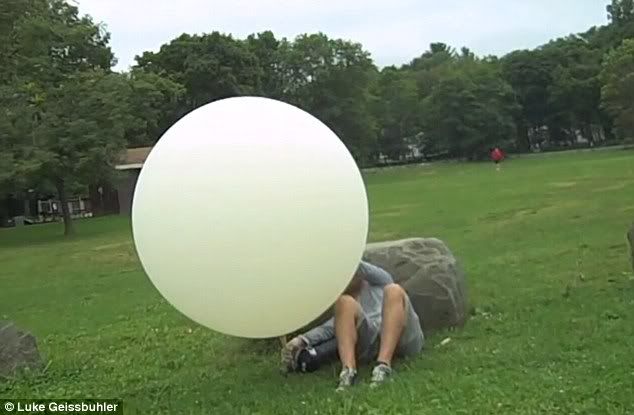It looks like satellite footage taken by a state-of-the-art NASA camera with a telescopic lens.
But this remarkable video was in fact filmed by an innovative father-and-son team equipped with just an iPhone and a high-definition video camera.
Luke Geissbuhler, 40, and his seven-year-old son Max, designed a 'craft' made from a takeaway box attached to a weather balloon and sent it, and the two electronic devices, into space.
Following months of research and testing, the amateur science enthusiasts launched their innovative weather balloon in Newburgh, New York, in August.
During a 102-minute flight it managed to reach an altitude of 19 miles above the ground in the upper stratosphere before the balloon burst and parachuted the craft back down to earth.
Mr Geissbuhler tracked the module, which was caught in a tree, by using the GPS system set up on the iPhone and spotted its flashing LED light.
The cinematographer and director said he got the idea for the project because he is always looking for fun ideas to share with his son.
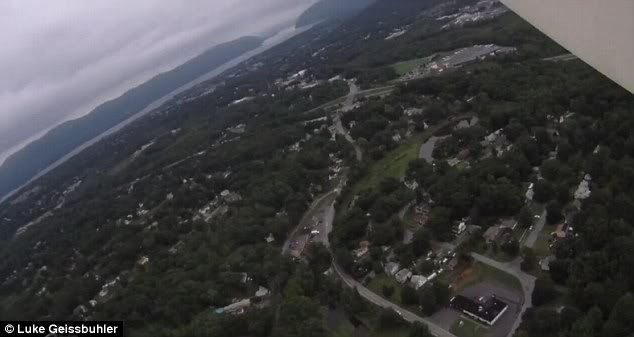
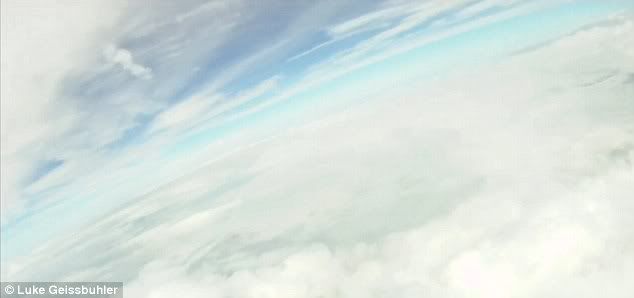
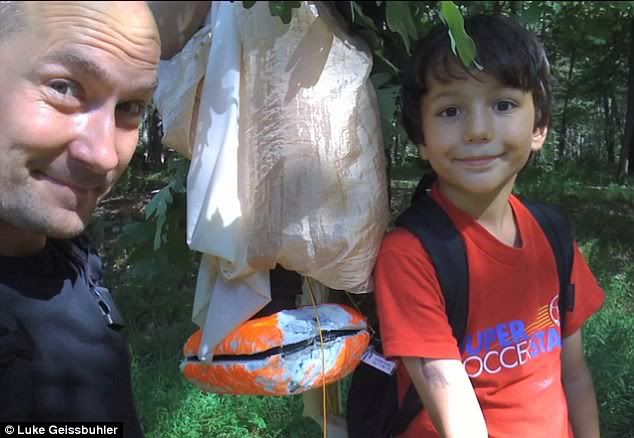
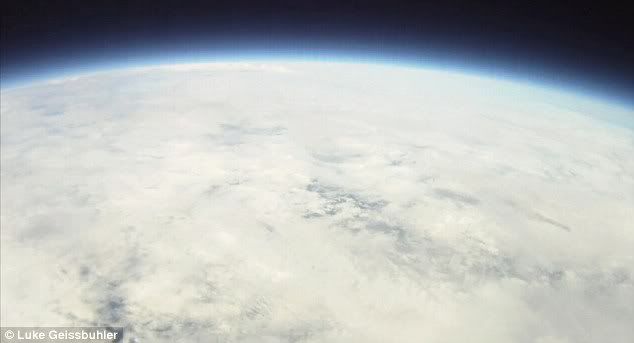
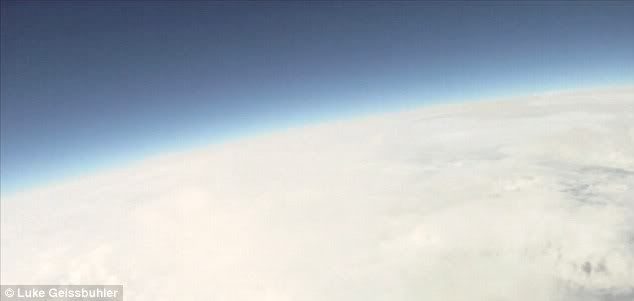
He said: 'Max and I work on all sorts of fun projects together. I've always been one to tinker.
'But even after months of research and testing - we only had a 30 per cent chance it would work. We got very lucky.'
When the pair managed to regain the footage from the flight - which lasted about 70 minutes and reached more than 100,000ft - they were worried whether the device had captured any images.
Mr Geissbuhler said: 'When we watched the first footage, we thought if we just see black we are going to freak.
'We were totally out of our minds when we saw the footage. It was more than we were even hoping for.'
The mobile phone and camera, which are typical items in homes across the world, survived 100mph winds, temperatures of -60C and a descent speed of 150mph.
A seven-minute film chronicling the endeavour was uploaded to www.brooklynspaceprogram.org, where it has created a stir among web bloggers.
Despite a fairly simple concept and equipment, the experiment turned out to be complicated.
Mr Geissbuhler said: 'We really had to do our homework with this. It appears to be simple, that's how I initially decided to do it.
'But as it became more serious, it turned into more high-tech science.
'It can be dangerous and you really have to plan where it will land.
'We don't want people to just go out and try it without taking the right precautions so we put together a book that tells the story about how we did it and includes instructions.
'People can reserve the book through the web site.'
